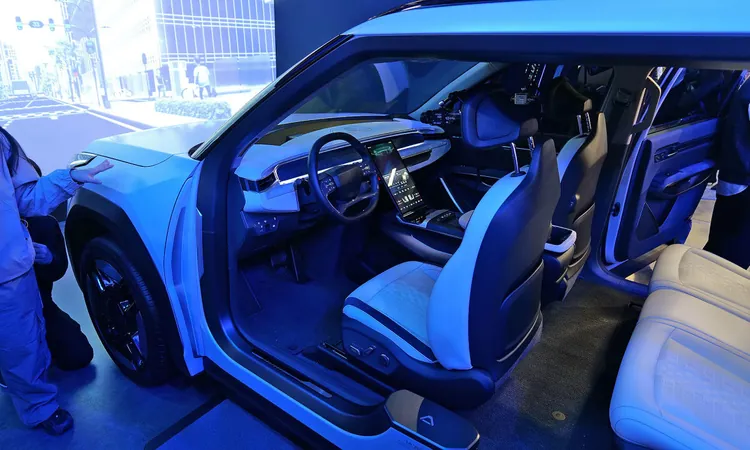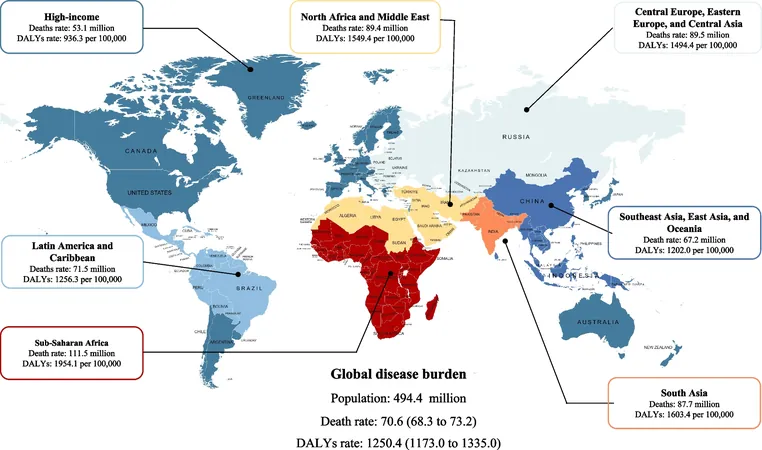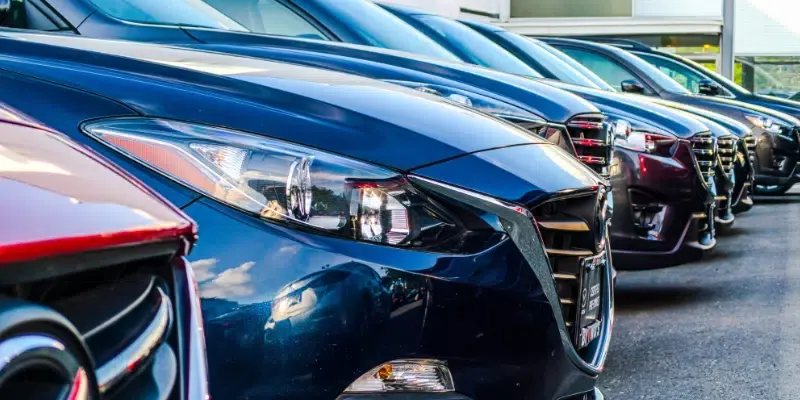
Hyundai Mobis Unveils Revolutionary Holographic Windshield at CES 2025: The Future of In-Car Displays is Here!
2025-01-08
Author: Amelia
Introduction
In an exhilarating showcase at CES 2025, Hyundai Mobis has unveiled what it claims is the world’s first full-windshield holographic display (HWD), marking a significant leap forward in automotive heads-up displays (HUDs). While traditional HUDs have been around since 1988, this innovative technology promises to redefine the in-car experience, moving beyond the constraints of earlier implementations that often felt outdated.
Technology Overview
Unlike conventional HUDs that usually reflect images onto a small section of the windshield, the Hyundai Mobis HWD offers an expansive view. This groundbreaking system utilizes multiple projectors discreetly placed beneath the dashboard, combined with a special optical film embedded in the windshield. This sophisticated setup allows for vibrantly colored and exceptionally bright images, viewable at much shallower angles, meaning that unless you are seated in the ideal position, you might not see the display at all.
Demonstration in Kia EV9 Prototype
During a demonstration within the Kia EV9 prototype, the HWD showcased its incredible functionality by dividing the display into three distinct zones: two for the driver and one exclusively for the passenger. For the driver, information such as speed, navigation directions, and even dynamic 3D maps that modify in real-time could be projected, dramatically enhancing navigation and situational awareness.
Passenger Zone Features
Conversely, the passenger zone allows for independent use, enabling passengers to check vehicle stats, watch videos, or engage in gaming without distracting the driver—a crucial safety feature made possible by the narrow viewing angles of this technology.
Future Potential and Limitations
Further enhancing its appeal, Dr. Minho Shin, a lead engineer on the project, revealed that the HWD is envisioned not just as a standalone feature, but as an augmentation of the vehicle’s central display system. Passengers may even have the ability to project content directly from their mobile devices, enriching their onboard experience. Dr. Shin elaborated that while a system covering the entire windshield is theoretically possible, legal restrictions in many countries currently inhibit such applications, keeping them within the bounds of sci-fi fantasies for now.
Competition and Market Outlook
Notably, BMW also presented similar technology at the event with their Panoramic iDrive system, which is expected to roll out in new models by the end of 2025. However, critics suggest that BMW’s method, which uses a low-transparent black film at the bottom of the windshield, might compromise driver visibility compared to Hyundai Mobis's clear HWD, thereby raising questions about the authenticity of its claim to innovation.
Conclusion
While BMW may lead the pack initially, Hyundai Mobis is not far behind and aims to put the HWD into mass production by 2027. As these augmented reality features continue to evolve, the automotive landscape is on the cusp of a significant transformation, reshaping the way we interact with our vehicles. Buckle up; the future of driving is getting an eye-popping upgrade!









 Brasil (PT)
Brasil (PT)
 Canada (EN)
Canada (EN)
 Chile (ES)
Chile (ES)
 Česko (CS)
Česko (CS)
 대한민국 (KO)
대한민국 (KO)
 España (ES)
España (ES)
 France (FR)
France (FR)
 Hong Kong (EN)
Hong Kong (EN)
 Italia (IT)
Italia (IT)
 日本 (JA)
日本 (JA)
 Magyarország (HU)
Magyarország (HU)
 Norge (NO)
Norge (NO)
 Polska (PL)
Polska (PL)
 Schweiz (DE)
Schweiz (DE)
 Singapore (EN)
Singapore (EN)
 Sverige (SV)
Sverige (SV)
 Suomi (FI)
Suomi (FI)
 Türkiye (TR)
Türkiye (TR)
 الإمارات العربية المتحدة (AR)
الإمارات العربية المتحدة (AR)